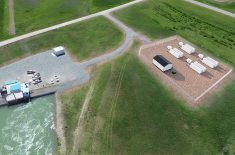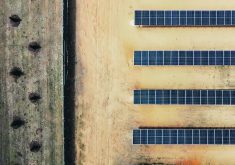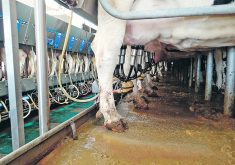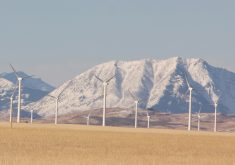First part of inquiry heard about the impact of solar and wind projects on pristine landscapes and their use of farmland
MEDICINE HAT — The Alberta inquiry into development of renewable energy projects is entering its final stage and hearings are set to end next month.
The first part of the inquiry wrapped up just before Christmas and included input from the public, municipalities, officials from power producers and environmental experts.
Discussions involved the impact of solar and wind projects on pristine landscapes, their use of agricultural land, fear of stranded liabilities when remediation is needed and the environmental effects of solar and wind projects.
The Alberta Utilities Commission panel also heard of contradictions in policy regarding how wind and solar are treated compared to oil and gas development.
Read Also

Saskatchewan puts crown land auction on hold
Auctions of Saskatchewan crown lease land are once again on hold.
The second portion of the inquiry will get underway in early February with a focus on the impacts of renewable power generation on supply and electricity system reliability and affordability.
During technical briefings held in November, Julia Frayer, consultant with Toronto-based London Economics International, said her firm will develop a market analysis on generation patterns and their effect on utility costs to present at the next hearings.
“We’re focusing on how the fuel mix in the inquiry is going to evolve given the growth in renewables. And the fuel mix has direct implications to the supply adequacy metrics,” Frayer told the hearing.
“We have two dual objectives for the study. We will look at system reliability, but we also want to understand costs.”
That includes the wholesale cost of electricity, a breakdown of additional amounts on consumer electric bills, and what those will look like in the future.
“The analysis that we will be able to present — which assumes the current framework — will provide a lot of information to stakeholders and decision makers about that relationship between supply adequacy and costs,” Frayer said.
The report by London Economics that will be presented Feb. 7 will be based on the forecast demand over the next 20 years. It is expected to show scenarios that incorporate decarbonization polices and provide a reliability assessment with consumer costs at five-year intervals from 2025 to 2040.
As for assessing affordability, Frayer said the report will hopefully be relatable to average electricity consumers.
“Our proposal for this project is to supplement … not to just end with the total market cost estimates that come out of the simulation modeling but complement it with the view to have that ultimately trickle down into a typical residential customer utility bill.”
Actual energy costs are 37 percent of the average Alberta electricity bill. Transmission and distribution make up half, and administrative and local access fees round out the total.
“What we’re going to try to do is get a snapshot of what these (costs) will look like for an average, typical residential customer,” said Frayer.
Once the report is presented next month, another technical meeting is scheduled Feb. 14 and stakeholders will provide submissions by Feb. 29.
According to an Aug. 3, 2023, Alberta government news release that announced the pause on approvals of new renewable projects, the moratorium will last until Feb. 29.











![Alberta will no longer allow such [wind and solar] projects on Class 1 and 2 land unless they can demonstrate crops and/or livestock can co-exist with them, said Alberta Premier Danielle Smith. | Getty Images](https://static.producer.com/wp-content/uploads/2024/02/29164059/solar-panels-GettyImages-1032683612-235x165.jpg)






